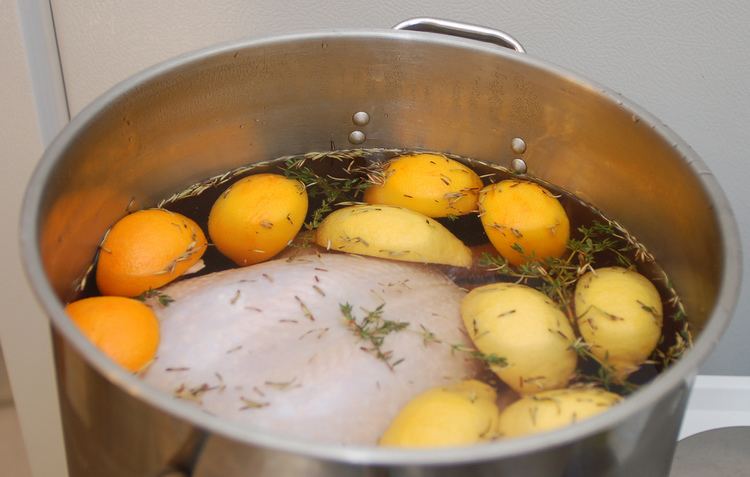 | ||
Why you might want to consider brining your meat rather than marinating
In food processing, brining (to brine) is treating something with brine or steeping it in brine.
Contents
- Why you might want to consider brining your meat rather than marinating
- Equilibrium brining chefsteps demo
- Poultry
- Cheese
- References
Equilibrium brining chefsteps demo
Poultry
Brining is a process similar to marination in which poultry is soaked in brine before cooking. Salt is added to cold water in a container, where the meat is soaked anywhere from 30 minutes to a few days. The amount of time needed to brine depends on the size of the meat. More time is needed for a large turkey compared to a broiler fryer chicken. Similarly with a large roast versus a thin cut of meat.
Food scientists have two theories about the brining effect, but which one is correct is constantly debated.
In many foods the additional salt is also desirable as a preservative.
Cheese
Some cheeses are periodically washed in brine during their ripening. Not only does the brine carry flavors into the cheese (it might be seasoned with spices or wine), but the salty environment may nurture the growth of the Brevibacterium linens bacteria, which can impart a very pronounced odor (Limburger) and interesting flavor. The same bacteria can also have some effect on cheeses that are simply ripened in humid conditions, like Camembert. Large populations of these "smear bacteria" show up as a sticky orange-red layer on some brine-washed cheeses.
